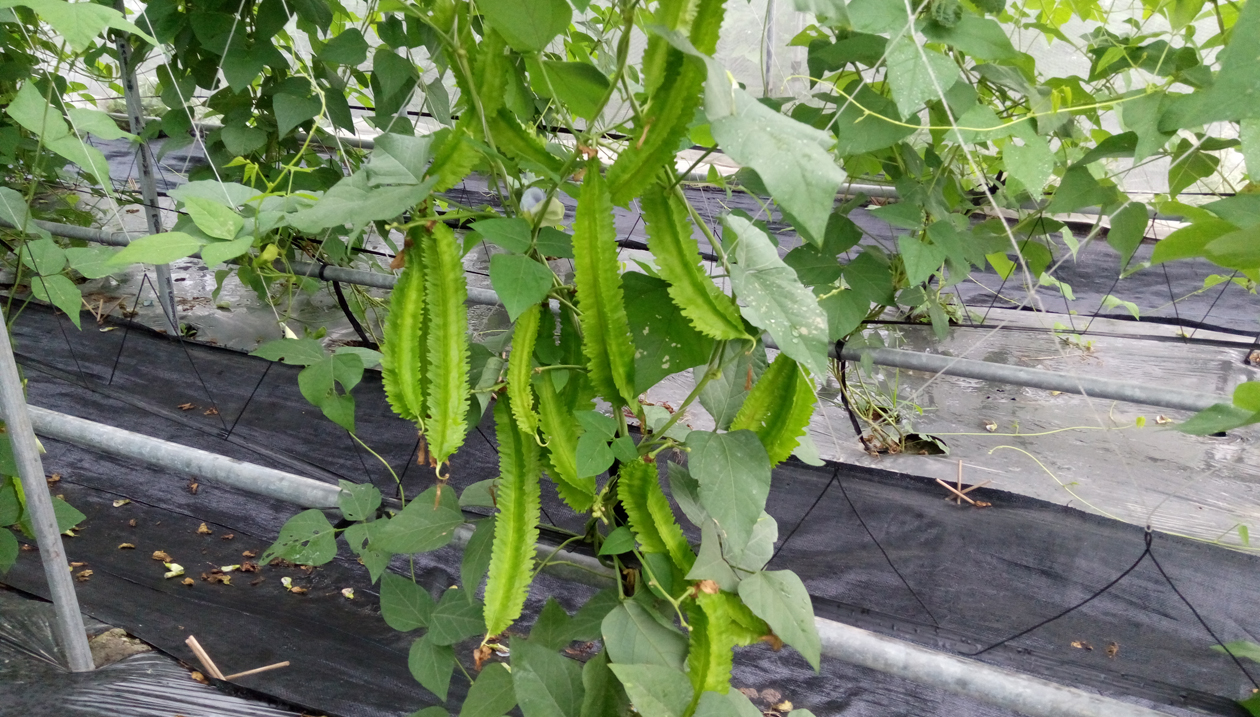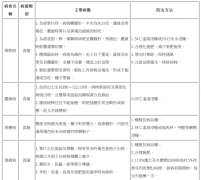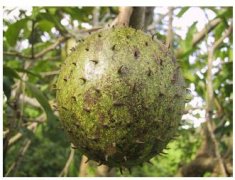Wing bean: how did you get it? Can I eat winged beans raw?
Have you ever seen beans with wings? If you haven't seen it before, let's find out about it. This kind of bean not only looks better than ordinary beans, but also has green pods, excellent pods and crisp taste. Spring cropping can produce high quality young pods. Can I eat winged beans raw? It should be possible, as long as there is no pesticide.

The Taitung District Agricultural improvement Farm of the Agricultural Committee of the Executive Yuan (hereinafter referred to as Taitung Field) in order to promote the development of the aboriginal vegetable industry in Taitung, on December 14, the Council of Agriculture held a press conference on the new variety of wing beans, "Taitung No. 1-Qingcui," to introduce the appearance of eye-absorbing, winged aboriginal legumes and their delicious dishes. The new variety of wing bean has green pods, high yield, good color after cooking, fresh and crisp taste, and the production period breaks through the restriction that the current local strain can only be produced in autumn. Spring cropping can also produce and supply the market normally, greatly prolonging the production period of wing bean. In addition, the new variety Yidou has strong growth and less diseases and insect pests, so it is suitable for the organic and friendly farming methods that the government is vigorously promoting. If farmers are cultivated and managed properly, they are of commercial value.
Chen Xinyan, director of Taitung Field, said that wing bean is an important legume vegetable crop for aborigines in the eastern region. It is native to Africa and Southeast Asia. It was introduced to Taiwan in 1910. The early cultivation mode was that the people planted a small amount of production at home, with autumn and winter as its main production season. At present, the local varieties of each tribe are mixed, and it is easy to have some shortcomings, such as different pod length, lack of consistent harvest standards, unstable yield and quality and so on. In order to promote the aboriginal vegetable industry in the area, Taitung has not only established economic mass production cultivation techniques in recent years, but also actively participated in the breeding of new varieties of wing beans. After years of breeding and cultivation experiments, a new variety was bred, and on May 2 this year (107), it was reviewed by many experts and scholars, and named "Yidou Taitong No. 1-Qingcui".
The new variety "Yidou Taitung 1-Qingcui" has excellent pod shape, consistent harvest standard, green color, fresh and crisp taste, can be cultivated in flat land and middle and low altitude, has strong growth and less diseases and insect pests. The annual yield of autumn cropping is about 11.5 metric tons per hectare, which is 44% higher than the average yield of 8 metric tons of the control local strain. In addition, because of its sensitivity to long sunshine, the current local strain is unable to blossom and produce pods after the Spring Equinox, and the production season usually ends after the Lunar New year, while the new varieties introduced in this field are insensitive to long sunshine and can still be produced normally until late May after the Spring Equinox, and there is no significant difference between yield and autumn cropping, which can greatly prolong the production period of winged beans by up to 3 months, which is very helpful to the aboriginal legume vegetable industry.

Chen Chang-chang specifically pointed out that the new variety "Taitung No. 1-Green" launched in Taitung Market has fewer diseases and insect pests and is suitable for organic cultivation. It is no less nutritious than common cowpeas or peas, and can provide people with more diverse and safe choices when buying legume vegetables. In addition, wing beans are also the most crisp of all kinds of legume vegetables at present. the secret of its delicious cooking is that when cooking, cut the tender pods into small pieces about finger width or appropriate size, blanch them for 30-60 seconds, and then add meat or dried fish to stir-fry according to your taste. it can also be served with mild breeze or flax sauce for good flavor.
Taitung Field stressed that the new variety "Taitung No. 1-Green Cui" has completed the technology transfer authorization, and Baida Qingnong-Liao Jiazu Farmers, who undertake the new varieties, are also actively involved in cultivation and production. In the future, all the stores in Taiwan with farm direct mining platforms will be sold on the shelves one after another, and the public are welcome to buy and taste fresh.
- Prev

Millet cultivation techniques: measures of millet field management and control methods of millet diseases and insect pests
Do you know millet cultivation techniques and field management? Are you aware of soil selection and soil preparation, sowing and interploughing, weed control and ploughing? There is also the prevention and control of diseases and insect pests. If you don't understand, let's take a look. (I) soil selection
- Next

Annona: is Annona Sakyamuni? What kind of fruit is Annona?
What kind of fruit is Annona and what is it? Do you want to know? Let's take a look. Annona is a rare tropical fruit in Taiwan. it is very similar to Sakya in plant taxonomy. it is also a fruit tree of the genus Annona, with a long conical fruit.
Related
- A one-day flower show brings 130 million yuan in orders! Nanhai, this Phalaenopsis exhibition is amazing
- What do the flower language and meaning of Lutheran tree mean? Precautions for planting Lutheran tree
- Encounter Chaoshan Kongfu tea, not without this cup of Phoenix single clump
- The durian market in Vietnam and Thailand is flooded. The price of imported durian has plummeted by 30-40% in a month.
- Shanghai solved the problem of local vegetable supply by planting 80,000 mu of green leafy vegetables.
- Wageningen University has become the best agricultural university in the world for the seventh time in a row.
- The strongest export season of South African grapes is full of challenges, with exports to Russia falling sharply by 21%.
- Sri Lanka is on the verge of bankruptcy, "Tea for debt" Organic Agriculture Revolution aggravates the Food crisis?
- Turning waste into earthworm manure and worm manure into organic fertilizer-A new choice for auxiliary farming
- Organic rice growers shoulder the responsibility of nurturing agricultural talents! Yinchuan Sustainable Farm with Organic Life Camp

